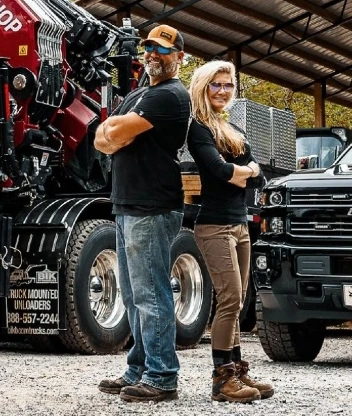
Florida’s subtropical climate makes it a paradise for lush landscapes—but it also creates the perfect environment for tree diseases to thrive. High humidity, heat, and year-round growing conditions allow certain fungi, bacteria, and pests to spread rapidly. Left unchecked, tree diseases can weaken your trees, cause decay, and even threaten your home or property.
At Holston Tree Service, we specialize in identifying and managing Florida tree diseases, helping property owners in Pensacola and across Northwest Florida protect their trees and restore their yards. Here’s what you need to know to spot the warning signs early and take action before it’s too late.
Early detection is the key to saving infected trees. Many diseases begin with subtle signs—discolored leaves, abnormal bark texture, or slow dieback—that are easy to miss. But catching them early can help prevent:
Through regular inspections and disease prevention trimming, many issues can be caught and addressed in time.
Laurel wilt is a deadly fungal disease transmitted by the redbay ambrosia beetle. Once infected, the tree rapidly wilts and dies. You may notice:
There is no cure. Infected trees must be removed immediately to prevent spread.
One of the most dangerous tree fungus Florida issues is Ganoderma, which causes internal rot at the tree’s base. Look for:
Ganoderma weakens the internal structure of the tree, making it prone to collapse, especially during high winds or hurricanes.
Anthracnose is a common fungal issue that attacks leaves and shoots. Signs include:
While not always fatal, repeated infections can weaken the tree’s overall health and appearance.
Sooty mold is a dark, powdery fungus that grows on the honeydew left behind by aphids, whiteflies, or scale insects. It appears as:
Controlling the insect population is key to managing this condition.
These diseases are caused by fungi or bacteria that target foliage. Symptoms include:
Most cases are cosmetic, but repeated annual infections can weaken the tree’s immune system.
Some tree diseases can be treated through proper trimming, soil care, or pest control. But others—especially those that compromise the trunk or root system—require immediate removal. Look for these signs to know when it’s time to call for tree removal:
In cases where the disease threatens nearby trees, professional removal may be the only way to stop the spread.
Holston Tree Service offers expert evaluations, trimming, and removals to protect your landscape from dangerous or unsightly tree diseases.
Contact us today or call 850-572-9863 for a free inspection.
Our team understands the specific tree diseases affecting Florida landscapes and follows state-recommended guidelines for treatment, removal, and disease prevention. When you call us, we provide:
✅ Professional tree inspections
✅ Strategic trimming to limit disease spread
✅ Safe diseased tree removal in Pensacola and surrounding areas
✅ Guidance for selecting resistant tree species for replanting
You can also review this FDACS guide to Florida tree diseases (PDF) for an overview of diseases most common to our region.
Tree disease may start small—but it can quickly spiral out of control if left untreated. By learning to recognize the signs early and working with a qualified tree care expert, you can preserve the beauty and safety of your landscape year-round.
If you’ve spotted warning signs of disease or decay, it’s time to act. Holston Tree Service is your trusted local team for diagnosing and treating tree fungus in Florida, helping you maintain healthy, vibrant trees for years to come.
Don’t wait until your tree becomes a hazard. Call Holston Tree Service today for a free disease inspection and personalized recommendations.
Mike Holston & Amanda Holston are the husband-and-wife team behind Holston Tree Service, serving Pensacola and Northwest Florida with expert tree removal, trimming, and storm cleanup.
Mike oversees operations and customer care, while Amanda is ISA TRAQ-Certified and an ISA Certified Arborist, bringing specialized training in Tree Risk Assessment and advanced pruning prescription plans to every project.
Proudly serving Pensacola, Cantonment, Gulf Breeze, Milton, Molino, Jay, and Pace with certified tree care and 24/7 emergency service.
